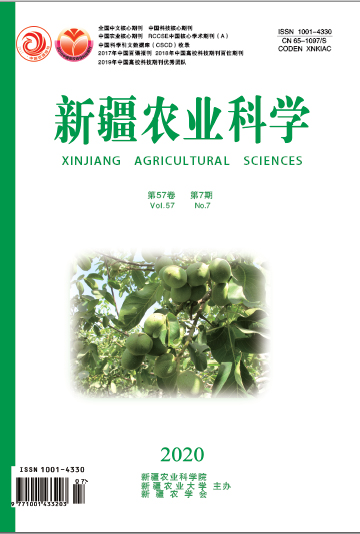|
|
Effects of Forest Conditions and Stand Structure on the Quantity of Agrilus mali Mats in Tianshan Wild Apple Forest
MA Zhilong, PENG Bin, Caddey Kader, ZHANG Yuanming, Adili Sattar
2020, 57(7):
1338-1348.
DOI: 10.6048/j.issn.1001-4330.2020.07.019
【Objective】 To understand the occurrence of natural quantity of Agrilus mali Matsumura in Tianshan wild apple forest and its relationship with influencing factors.【Methods】 This study was based on 17 standard plots of wild apple trees in Tianshan Mountains, taking Agrilus mali Matsumura as the object of study to study the effects of site factors such as altitude, gradient, slope position and aspect, forest stand factors such as stand canopy, stand density, wild apples ratio and tree species richness on the quantity of Agrilus mali Matsumura, and to build the prediction mode.【Results】The results showed that: The average quantity of insect in stands with an altitude higher than 1,400 m was the lowest, only 0.49 /m sample branch, the average insect quantity was the highest in the range of 1,250-1,299 m, up to 1.26 /m sample branch. With the increase of the gradient of the sample land, the quantity of Agrilus mali Matsumura was decreasing, the average insect quantity in the gentle slope stands(6°≤gradient≤15°) was the highest, up to 1.24 /m branches, which was significantly higher than the 0.39 /m sample branches on the steep slope (26°≤ gradient ≤35°). The highest number of insect quantity was found in stands with canopy density of 0-0.29, up to 1.44 /m branches, it was significantly higher than stand density of 0.30-0.49 and 0.50-0.79 (P<0.05). The average number of insect quantity in sparse stands with stand density lower than 0.11 was the highest, which was 1.5/m sample branches. Partial correlation analysis showed that the absolute value of partial correlation coefficient between elevation and slope was larger, was 0.598 and 0.542, it was the key influencing factor of the quantity of Agrilus mali Matsumura. T test results showed that the relationship between them and the average quantity reached a significant level(PX1=0.031;PX3=0.047;<0.05). The multiple regression model: Y=5.541-0.003X1-0.033X4 was established based on altitude (X1), slope position (X4) and number of quantity (Y). F test shows that the linear regression prediction model reaches a significant level(F=12.021, df=2, 16, P=0.001). The predicted value was compared with the measured value and the average difference was 0.193. The measured value and the predicted value were tested by T, the results showed that there was no significant difference. 【Conclusion】 Altitude and gradient are the key factors that affect the amount of Agrilus mali Matsumura, slope position is the second, the effects of stand canopy, stand density, slope direction, wild apple ratio and tree species richness on the number of Agrilus mali Matsumura population are weak, and they are non-major factors.
|

